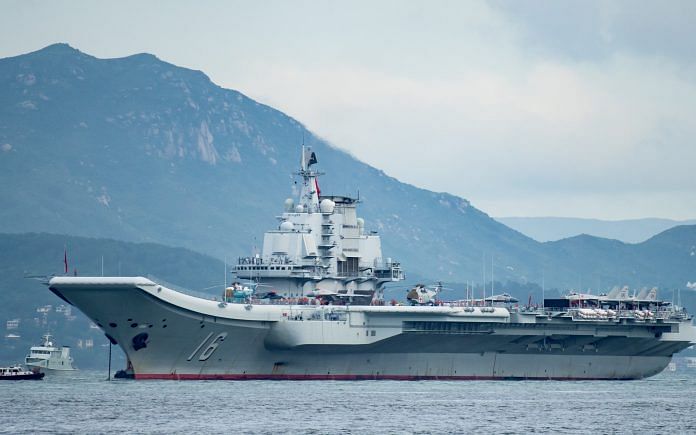Satellite images show a carrier and a general supply vessel, along with large amounts of loads, being parked at Xiaokouzi, 45 km southwest of Qingdao.
The core idea of the ‘Chinese Dream’ put forth by President Xi Jinping is to make China an economic and military superpower. A Blue Water navy, among others, is essential to achieve this. It can facilitate power projection anywhere in the world at short notice.
The main components of a Blue Water navy are strong bases around the globe for resupply of essentials and carrier vessels battle groups (CVBG). A CVBG is a naval formation comprising an aircraft carrier and several escort vessels.
Satellite images accessed by ThePrint reveal that China is all set to operationalise its first CVBG.
China’s overseas base at Djibouti, which is turning out to be a mega fortress, is part of its Blue Water strategy. China’s intentions will become clearer after its bases in Pakistan, Maldives, Sri Lanka and Myanmar are constructed and made operational.
Carrier vessels
The Chinese carrier vessel programme at Dalian is moving at a very fast pace. The first carrier vessel, Liaoning, is operationalised and the second one, to be named, Shandong, is almost ready for sea trials.
The first aircraft carrier of the Chinese Navy — Type 001 Liaoning CV16 — was purchased from Ukraine and took more than a decade to be commissioned.
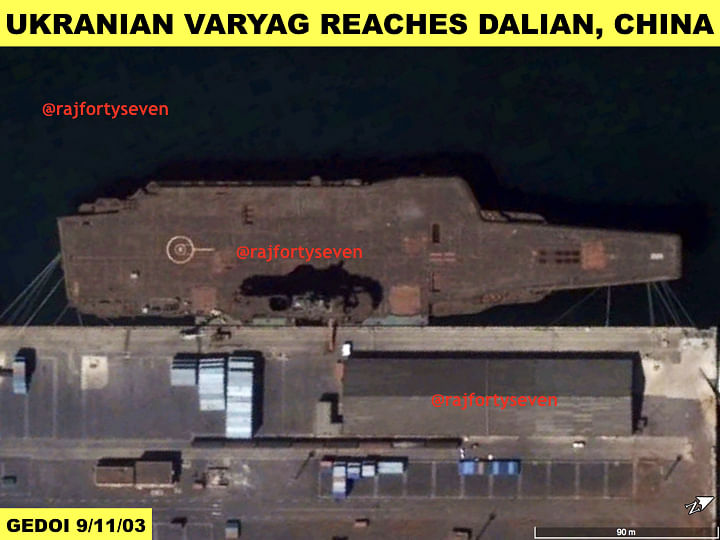
The navy shipyards and engineers have made phenomenal progress in carrier vessel construction. They launched the second aircraft carrier in April 2017 as Type 002 CV17 (Shandong) in an exceptional time frame of less than two years.
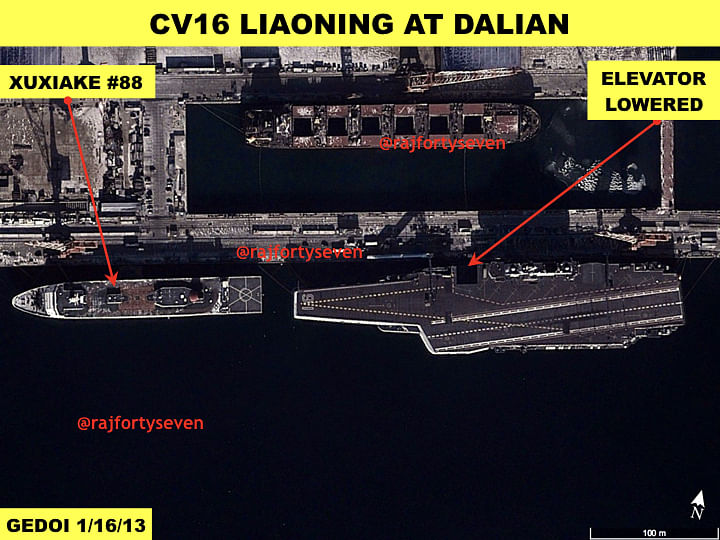
Both Chinese carrier vessels have exactly similar specifications and armaments — length 305 m, beam 74 m, armaments 3 X HHQ-10 (18 cells short range air defence or SHORAD) and 3 X Type 1130 close-in weapon system. Even aircraft are the same — 24-36 Shenyang J-15, 8 Changhe Z-18F, 4 Changhe Z-18J and 4 Harbin Z-9C.
Vessel bases
The Chinese navy has constructed two bases specifically to station its carrier vessels. The first one was carved out of a mountain at Xiaokouzi, 45 km southwest of Qingdao. Recently, an additional pier was being constructed, possibly to hold the support vessels.
The second one was constructed at Sanya, Yulin, which would give a quicker reach to the South China Sea. Here too some additional piers are being constructed, the purpose of which is not yet clear.
New replenishment ships
Sustained naval operations at far seas, especially of the aviation fleet, require replenishment every 4-5 days. Thus there is a strong need to have a replenishment vessel with comparable speeds to accompany the carrier vessel battle group (CVBG).
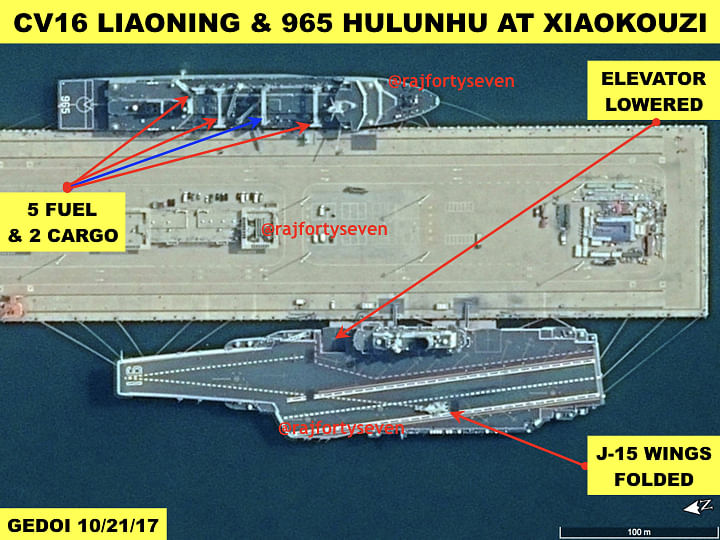
The Chinese navy has constructed a Type 901 “general supply vessel” to meet this requirement at the Longxue shipyard in Guangzhou. The vessel, named Hulunhu after the Mongolian lake, has a smart feature, quite different from other older generation oilers.
It permits monitoring and calculating the consumption and stocks available of all types of ships under its supply responsibility. The system then automatically proposes optimised refuelling plans based on the missions and the conditions at sea.
The latest sighting of Hulunhu and the Liaoning at Xiaokouzi on 21 October 2017, along with large amounts of loads, clearly indicates that Chinese navy is all set for its first CVBG to be operational. The maiden voyage of the first CVBG should commence soon, if not already started.
Wingman or consort ship
A special barracks ship was observed at Dalian when CV16 was nearing commission. The first barracks ship constructed by GSI was named Xuxiake #88. It was classified as Daguan class wingman by the NATO and dubbed consort of CV16 on Chinese internet.
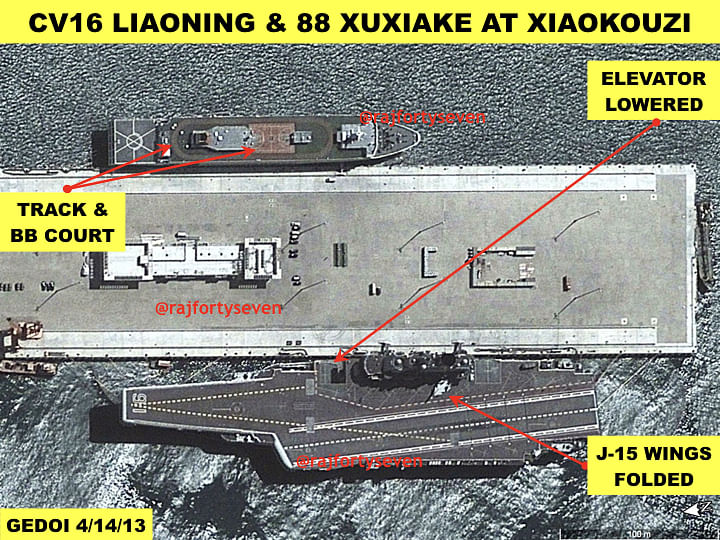
The second ship of the class was constructed at Longxue shipyard. It is currently on sea trials and should be visible at Dalian with CV17 soon.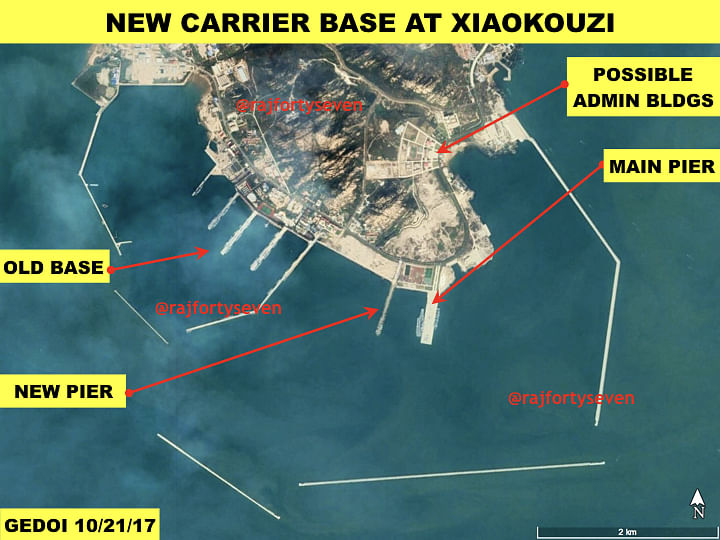
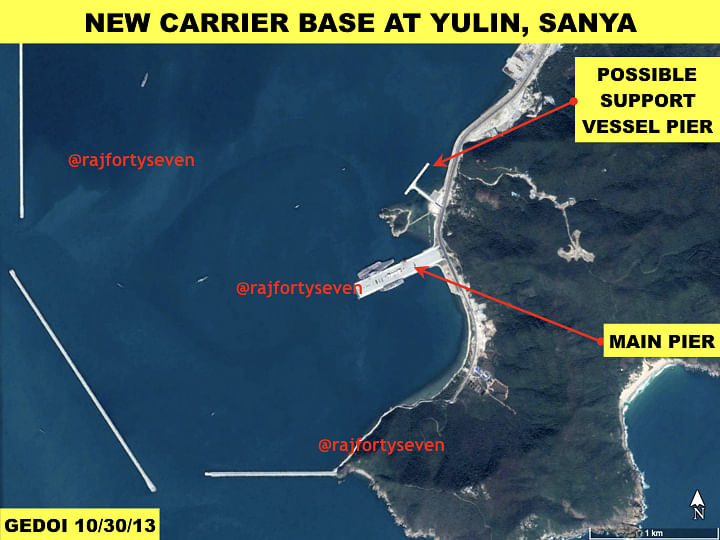
The strategy
China’s initial deployment, away from its shore, was for anti-piracy missions in the Gulf of Aden. These missions were also used as goodwill visits to various countries in Asia, Africa and Europe.
The extended deployment of these flotillas exposed the need for food, water, medicines and other essentials that couldn’t be met by Type 903/903. They had to depend on foreign ports for all supplies. The obvious lesson learnt was the requirement of permanent bases around the world.
China’s first overseas base in Djibouti, as reported by The Print, could become a model for its other bases in the region, especially in Pakistan.
By 2030, when China is expected to possess around six carrier vessels, it is hypothesised that two CVBGs will remain at home ports of Xiaokouzi and Yulin and one possibly under repair and/or refit while the rest are stationed in different parts of the world covering the entire globe.
Col Vinayak Bhat (retd) is a Military Intelligence veteran of the Indian Army with vast experience of satellite imagery analysis. He has worked as a Chinese interpreter and is a specialist on PLA and Pakistan’s armed forces. He tweets @rajfortyseven.


